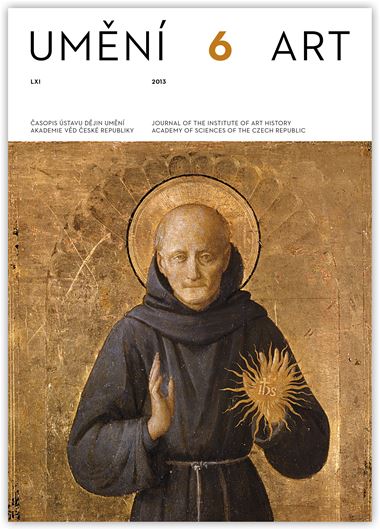Jan Chlíbec
The Contest between Utraquist Chalice and the Bernardino Sun
In the first half of the fifteenth century the sermons of Bernardino da Siena (1380–1444) had a powerful influence on society, not just in the Italian peninsula but beyond the Alps. Advocating moral purity, he won over members of every class, from the simple peasant to Holy Roman Emperor Sigismund of Luxemburg. Bernardino was canonised in 1450. His ideas and a cult of the saint were promulgated through the German lands and Bohemia, Moravia, and Silesia by his successor Giovanni Capistrano (1386–1456). Bernardino created a symbol for the name of Christ to serve as a kind of meaningful sign encouraging faith, peace, and civic harmony among Christians. This emblem would eventually become the symbol carried by Christians waging battle against infidels and ideological opponents, and it was also the symbol of the Franciscan Observant order founded by Bernardino. He cited works of art as exempla in his sermons, but his understanding of the role of art was rooted in the Middle Ages, seeing its primary value as its didactic function and as a medium for helping Christians to live a pious life; he took an exclusively didactic and moralising view of art, not an aesthetic one. He looked to the art of earlier periods for his examples and found his notion best matched by the work of Simone Martini. Bernardino also defined what kind of art was harmful to Christians and targeted such works for destruction, his theatrical bruciamenti delle vanità making him a forerunner to Girolamo Savonarola. In 1451 Capistrano arrived in the Czech lands and his influence led to the founding of Franciscan Observant monasteries as ‘fortresses’ of strict Catholicism. They ended up in sharp ideological dispute with the Utraquist majority, and the conflict between the two camps even came to be reflected in art. Visual forms of satirical allegories and caricatures of Observant brothers and Capistrano became popular on the Utraquist side, while the Catholics fought back by disseminating images of the order’s foremost representatives (St Bernardino and Capistrano) and by embracing a focus on Marian themes. The visual art thus became an important medium through which these ideological conflicts were hashed out.
Full-text in the Digital Library of the Czech Academy of Sciences:
https://kramerius.lib.cas.cz/uuid/uuid:5e2ae1f6-d48e-4986-8466-6bbd56724349
< back

